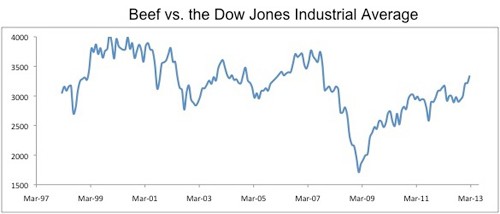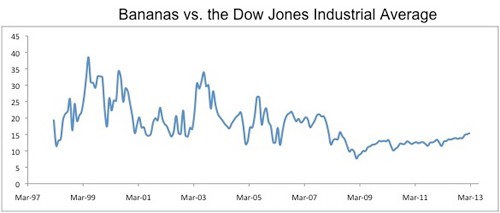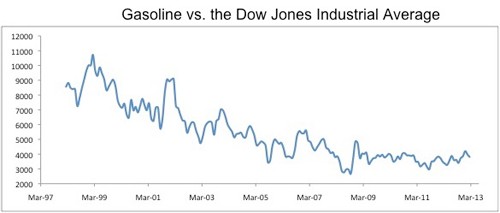As mentioned in the previous post, the press is celebrating the Dow's all time highs. There is no question that the nominal value of the Dow has indeed hit all time highs in absolute value. But what about when we look at it in real vs nominal value?
(For new readers or those who need a review of real vs nominal click the link)
The Wall Street Journal provides the following graphic below to illustrate the difference. And keep in mind they are of course, using official inflation rates that we know understate the actual rate of inflation for those of us who buy gas and food that the Fed excludes.
Click graphic to expand
The graphic above is from 1994 to present and shows the massive difference in the Dow's real vs nominal price. This is what your stock broker never shows you because they are in the business of selling stocks. If you invested in the year 2000 your broker would show you the yellow line to show you the gains you've had. He/she pay even pat themselves on the back.
But if you took inflation into account, you'd be looking at the black line where you clearly can see that an investment in the Dow in 2000 still would not have recovered its value yet in 2013. How can this be? Don't brokers and financial advisers always say stocks always go up in a ten year time horizon? How do they explain that in thirteen years of stock investing you've lost money? Of course they don't. They'll just point to the yellow line. And since most people don't think about the constant devaluation in the dollar they merely look at the number on their statement.
It gets worse
What if you didn't believe the government's inflation numbers? What if you recognized the US dollar is not a constant but a constantly declining asset. What if you wanted to value the Dow in a currency that was truly constant? Well then you might want to value the Dow in the world's oldest currency. Maybe gold.
After all, an ounce of gold today is exactly the same as an ounce of gold in Roman times. People anecdotally point out that an ounce of gold can buy a very fine suit now just as it bought a senator's toga in Roman times. So what of the Dow priced in gold?
Click to enlarge
Well that would be the Dow:Gold ratio graph I have shown before, which shows that the Dow, when priced in gold has declined more than 50% since the financial crisis!!!!
And then there is this amusing perspective from Sovereign Man Blog:
Take beef, for example. Based on USDA retail price data, today the Dow will buy you 3,332 pounds of beef in the supermarket. This sounds like a lot. But it’s actually about 20% less than the 4,046 pounds of beef the Dow would buy back in December 1999.

And if beef’s not your thing, let’s look at fruit. Based on the wholesale price of bananas, the Dow currently buys you a whopping 15.35 tons of the tropical fruit.

But this is exactly the same amount of bananas the Dow would buy back in February 2008, when the Dow was just 12,266. And it’s a massive 60% drop from June 1999 when the Dow bought 38.51 tons of bananas.
Gasoline is an even more interesting example. Today, the Dow will buy roughly 3,812 gallons of unleaded, non-premium gasoline in the United States. This is almost exactly the same as last January, just fifteen months ago, when the Dow was only 12,633.

But to match its high of 10,718 gallons set in March 1999, the Dow would need to almost triple from where it’s at today.
Look, there’s nothing wrong with investing in great companies. But it’s important to recognize that the ‘buy and hold’ strategy espoused by the vast majority of financial advisors has been a serial loser for the last 10-15 years.
Given that you can’t eat or fuel up your car with stock certificates, it’s important to remember that we all live in an inflation-adjusted world. And that there are serious, serious consequences to out of control money printing by central banks.




No comments:
Post a Comment